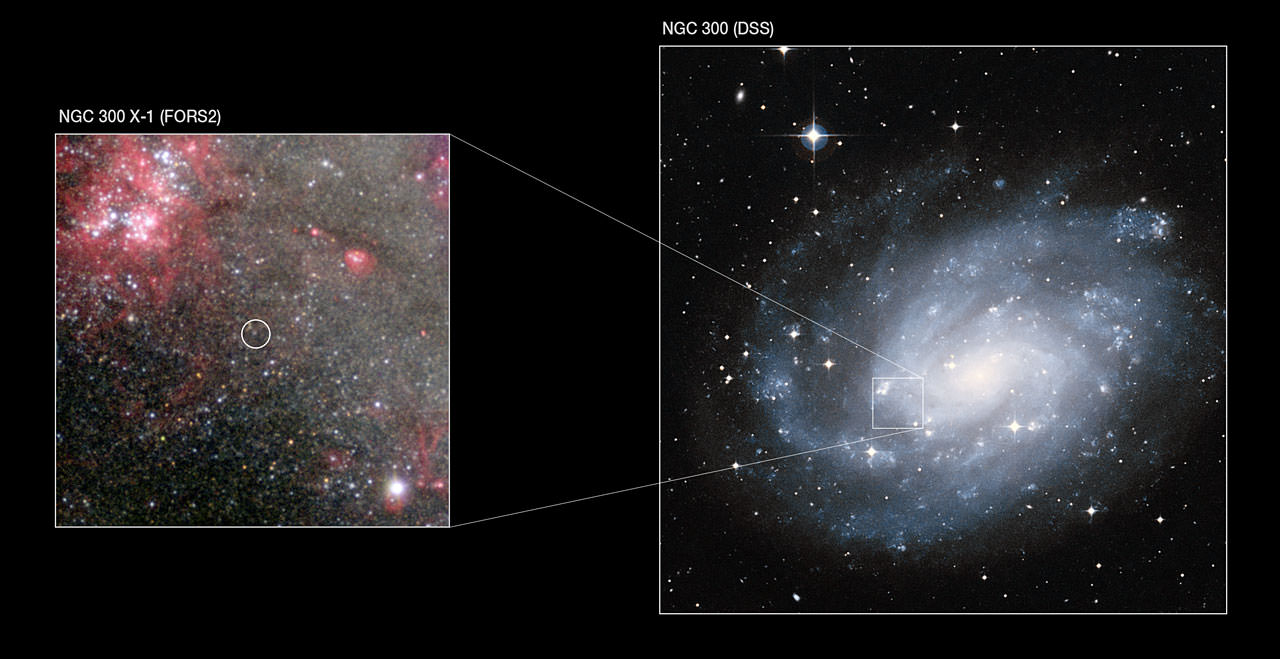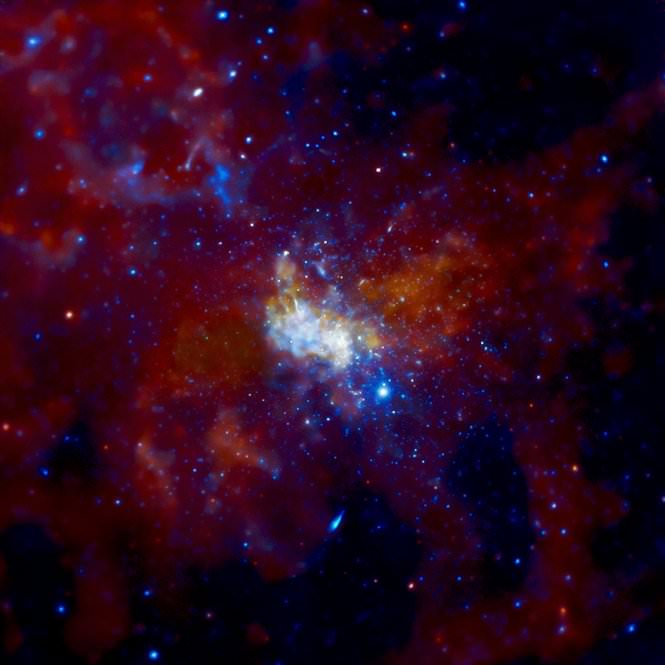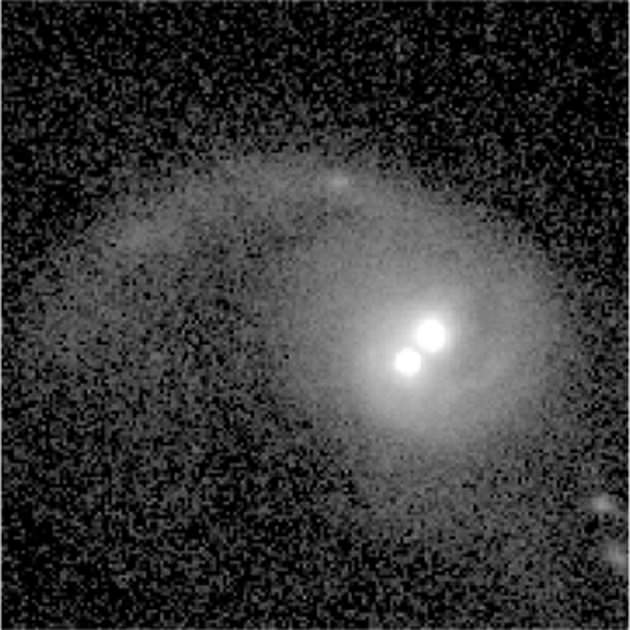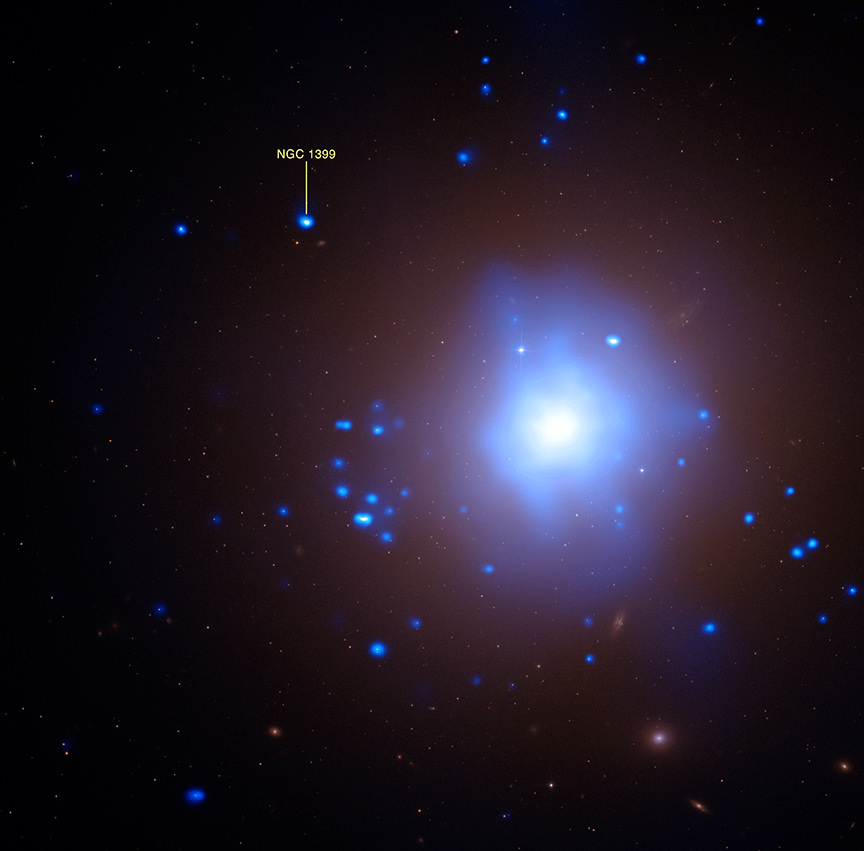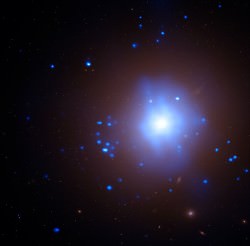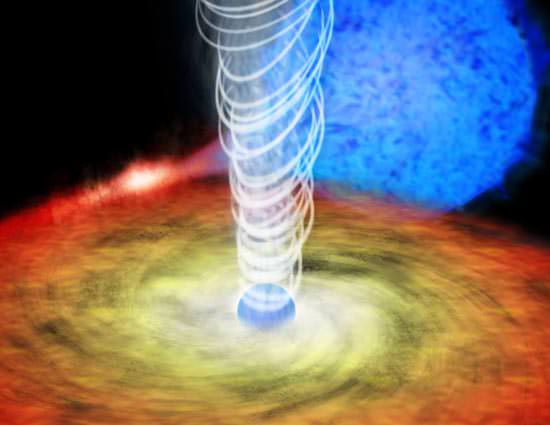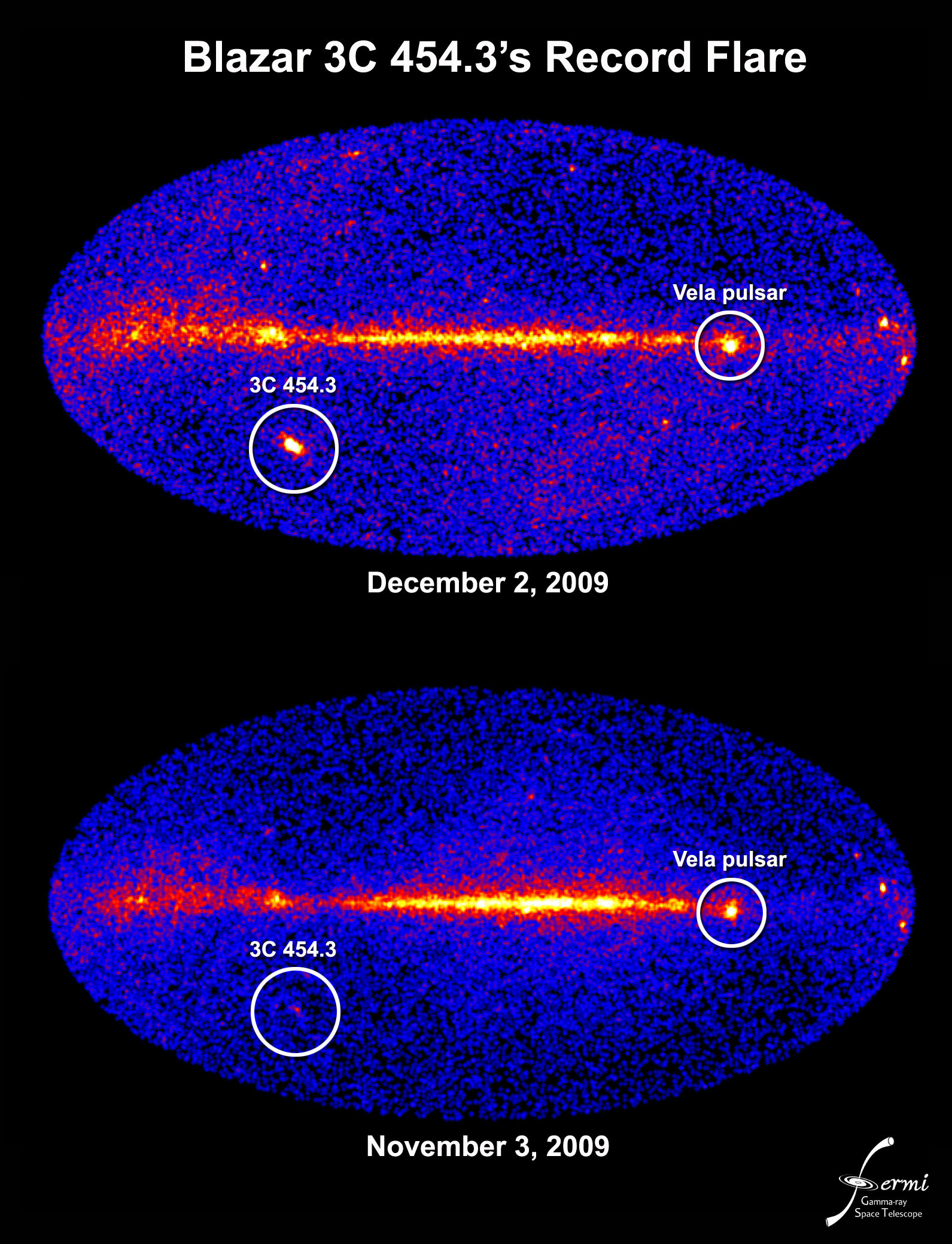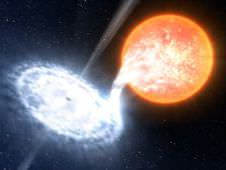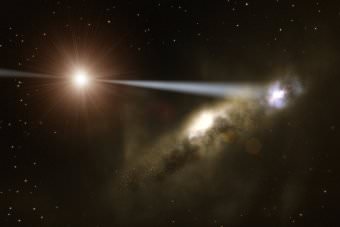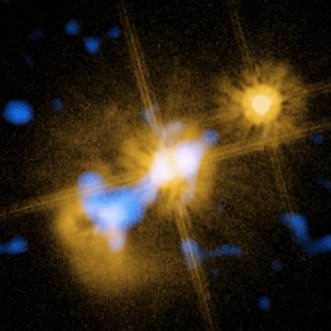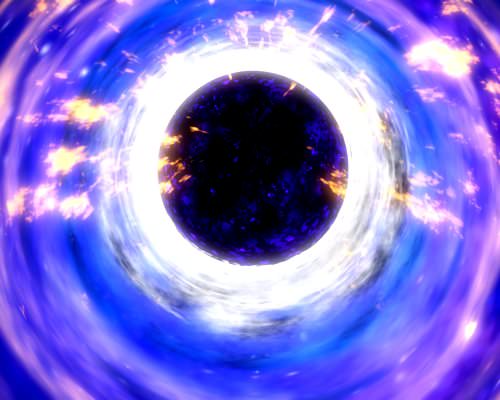[/caption]
Not only is a newly found black huge, it also is the most far-away stellar-mass black hole ever detected. “This is the most distant stellar-mass black hole ever weighed, and it’s the first one we’ve seen outside our own galactic neighborhood, the Local Group,” said Paul Crowther, from the University of Sheffield. Using ESO’s Very Large Telescope, astronomers peered six million light-years from Earth into a spiral galaxy called NGC 300 and found a black hole with a mass above fifteen times that of the Sun. This makes it the second most massive stellar-mass black hole ever found. But soon it could get bigger. The black hole appears to have a nearby partner, a massive Wolf–Rayet star which likely will become a black hole itself, and the two black holes could merge into an even more massive object.
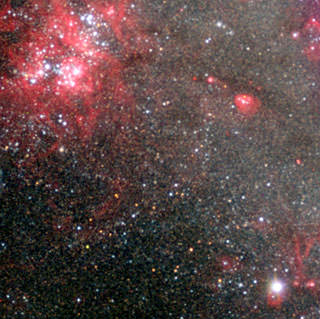
In 2007, an X-ray source in NGC 300 was discovered with the XMM-Newton X-ray observatory and the Swift Observatory. “We recorded periodic, extremely intense X-ray emission, a clue that a black hole might be lurking in the area,” said team member Stefania Carpano from ESA.
Subsequent observations with the VLT’s FORS2 instrument (a visual and near UV FOcal Reducer and low dispersion Spectrograph) confirmed their hunch, but also showed that the black hole and the Wolf–Rayet star circled each other every 32 hours. The astronomers also found that the black hole is stripping matter away from the star as they orbit each other.
“This is indeed a very ‘intimate’ couple,” said collaborator Robin Barnard. “How such a tightly bound system has been formed is still a mystery.”
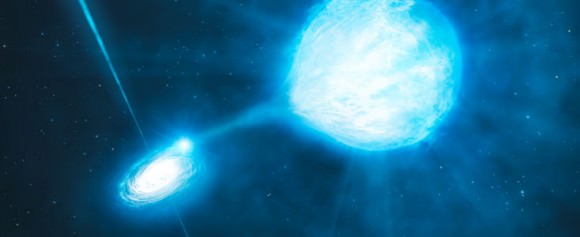
Stellar-mass black holes are the extremely dense, final remnants of the collapse of very massive stars. These black holes have masses up to around twenty times the mass of the Sun, as opposed to supermassive black holes, found in the center of most galaxies, which can weigh a million to a billion times as much as the Sun. So far, around 20 stellar-mass black holes have been found.
Only one other system of this type has previously been seen, but other systems comprising a black hole and a companion star are not unknown to astronomers. Based on these systems, the astronomers see a connection between black hole mass and galactic chemistry.
“We have noticed that the most massive black holes tend to be found in smaller galaxies that contain less ‘heavy’ chemical elements,” said Crowther. “Bigger galaxies that are richer in heavy elements, such as the Milky Way, only succeed in producing black holes with smaller masses.”
Astronomers believe that a higher concentration of heavy chemical elements influences how a massive star evolves, increasing how much matter it sheds, resulting in a smaller black hole when the remnant finally collapses.
In less than a million years, it will be the Wolf–Rayet star’s turn to go supernova and become a black hole. “If the system survives this second explosion, the two black holes will merge, emitting copious amounts of energy in the form of gravitational waves as they combine,” said Crowther.
But this won’t happen for a few billion years. “Our study does however show that such systems might exist, and those that have already evolved into a binary black hole might be detected by probes of gravitational waves, such as LIGO or Virgo.”
Paper: NGC 300 1-X is a Wolf-Rayet/Black Hole Binary
Source: ESO

